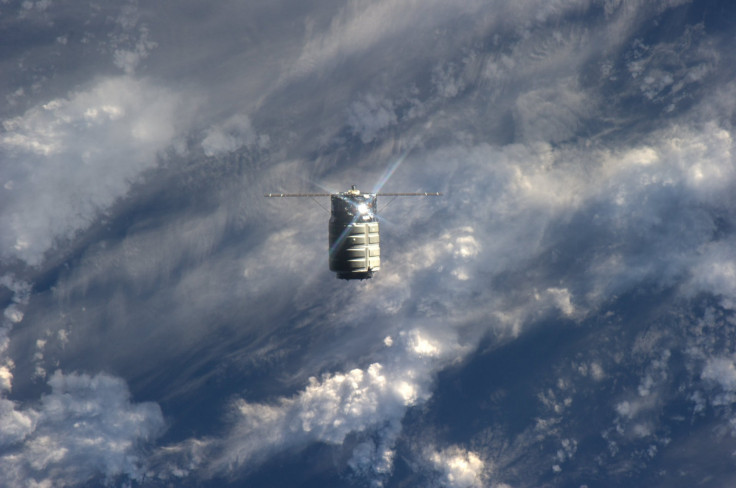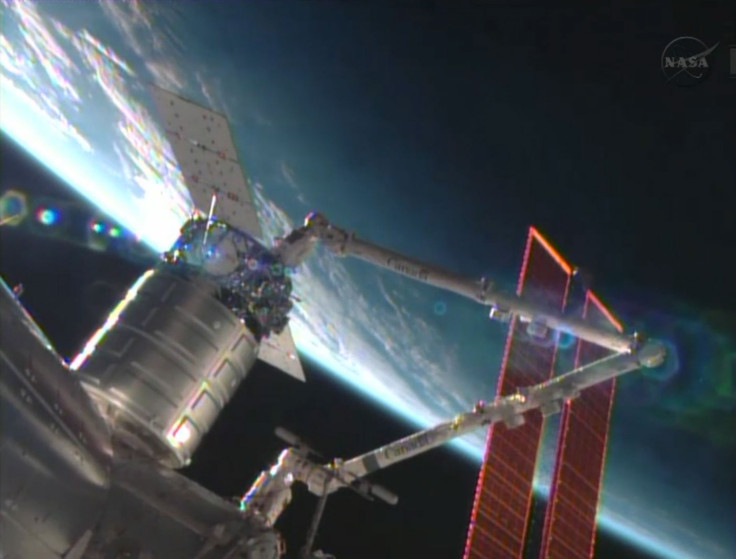Orbital’s Cygnus Spacecraft Successfully Docks With The International Space Station
After two delays, the Orbital Sciences Corp. (NYSE:ORB) Cygnus spacecraft successfully docked with the International Space Station. Cygnus was launched from NASA’s Wallops Flight Facility on Wallops Island, Va., on Sept. 18, and it was grabbed by the space station’s Canadarm2 robotic arm on Sunday around 7 a.m. EDT.

Cygnus was originally scheduled to rendezvous with the ISS on Sept. 22, but was delayed due to a software glitch and the arrival of the Expedition 37 crew on Sept. 25. Before Sunday, Cygnus completed a series of mission objectives, including pointing a tracking laser at Kibo Laboratory, a Japanese science module. On Sunday, the spacecraft positioned itself to be captured by European Space Agency astronaut Luca Parmitano, with NASA astronaut Karen Nyberg acting as his backup.
Operating the Canadarm2, Parmitano successfully attached Cygnus to the Harmony module at 8:44 a.m. EDT, NASA reported. Charles Bolden, NASA administrator, said of Cygnus’ successful rendezvous: “Today, with the successful berthing of the Orbital Sciences Cygnus cargo module to the ISS, we have expanded America's capability for reliably transporting cargo to low-Earth orbit. It is an historic milestone as this second commercial partner's demonstration mission reaches the ISS, and I congratulate Orbital Sciences and the NASA team that worked alongside them to make it happen.” The first commercial partner to reach the ISS was Elon Musk’s SpaceX.

Cygnus was developed by Orbital Sciences as part of NASA’s Commercial Orbital Transportation Services, or COTS, program. As part of the program, Orbital signed a $1.8 billion contract with NASA that will run through 2016. During that time, Orbital will conduct eight resupply missions to the ISS, sending 44,093 pounds (20,000 kilograms) of net cargo. Commercial partners will help cut the cost of resupply missions to the ISS, and a future component of the program will be sending new crew members to the ISS.
A video of Cygnus’ successful docking with the ISS can be viewed below:
© Copyright IBTimes 2025. All rights reserved.






















